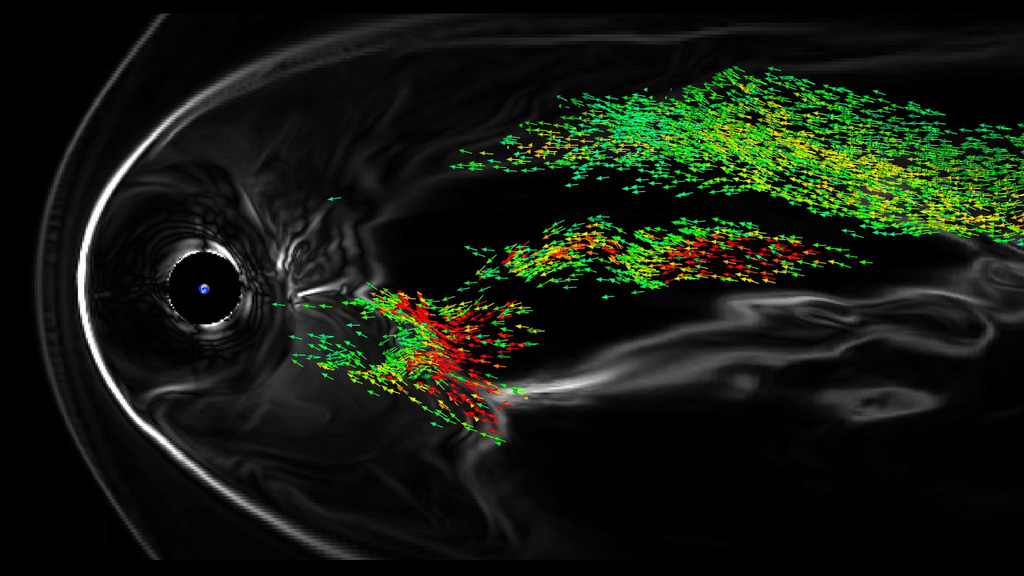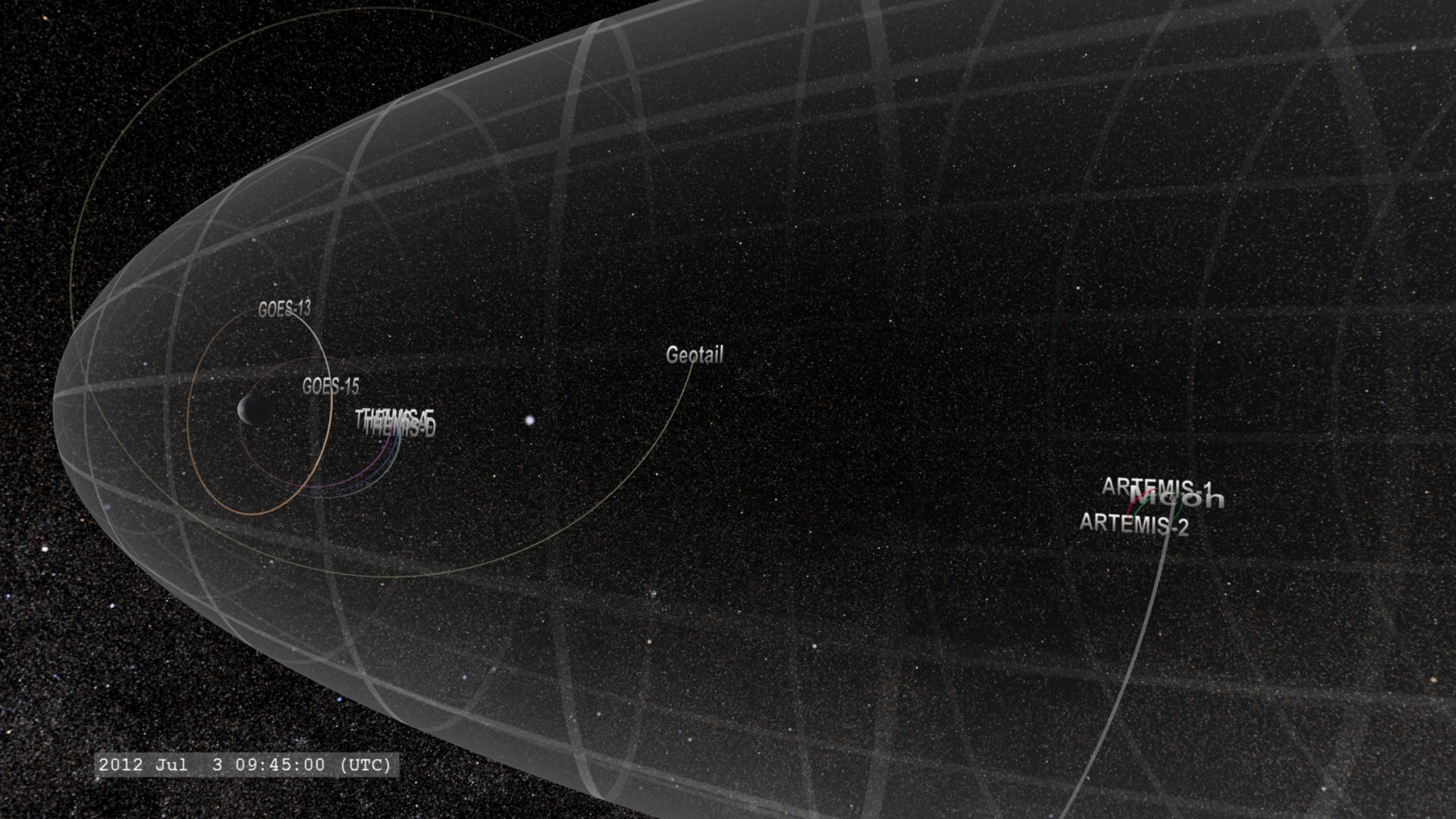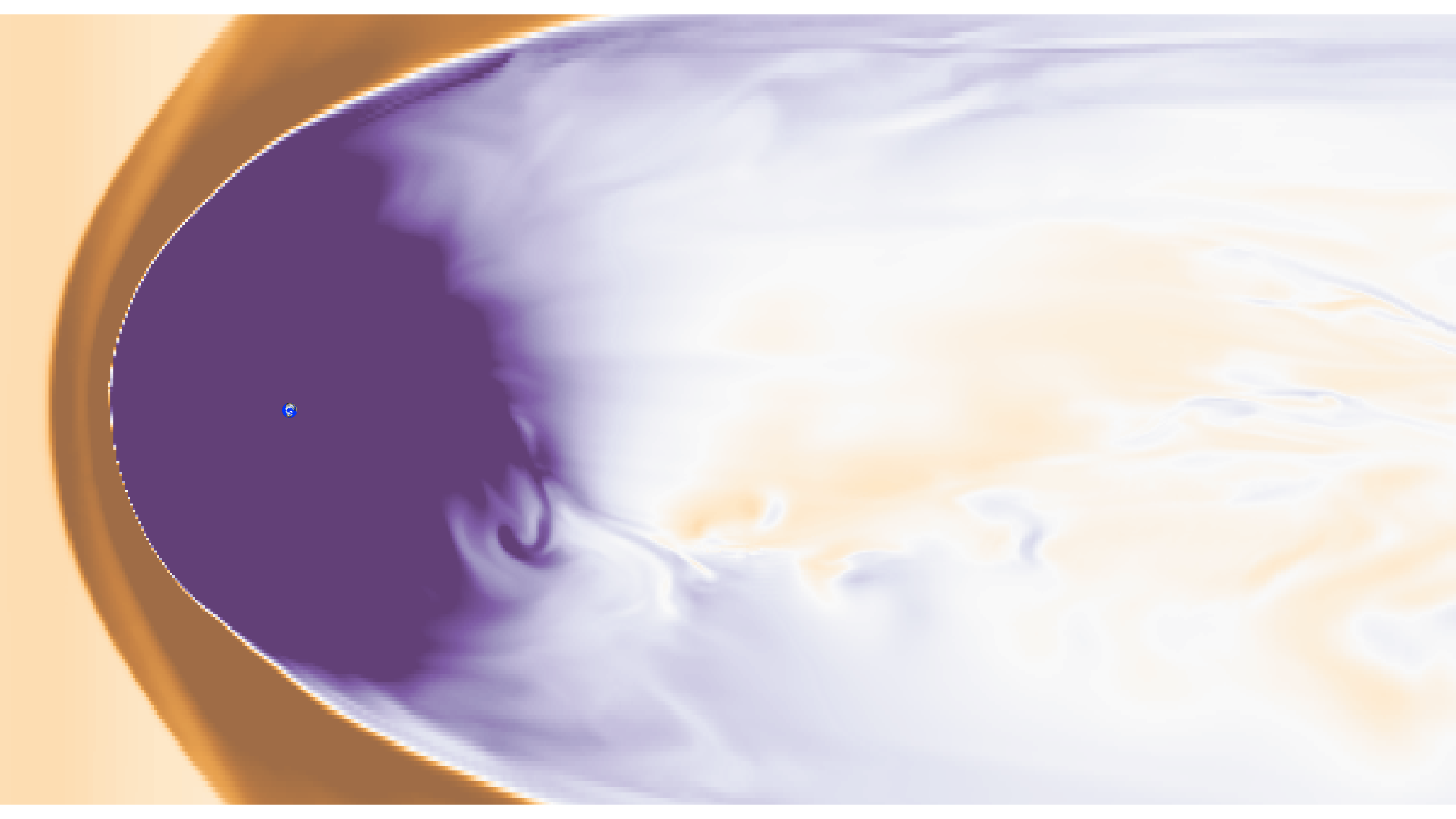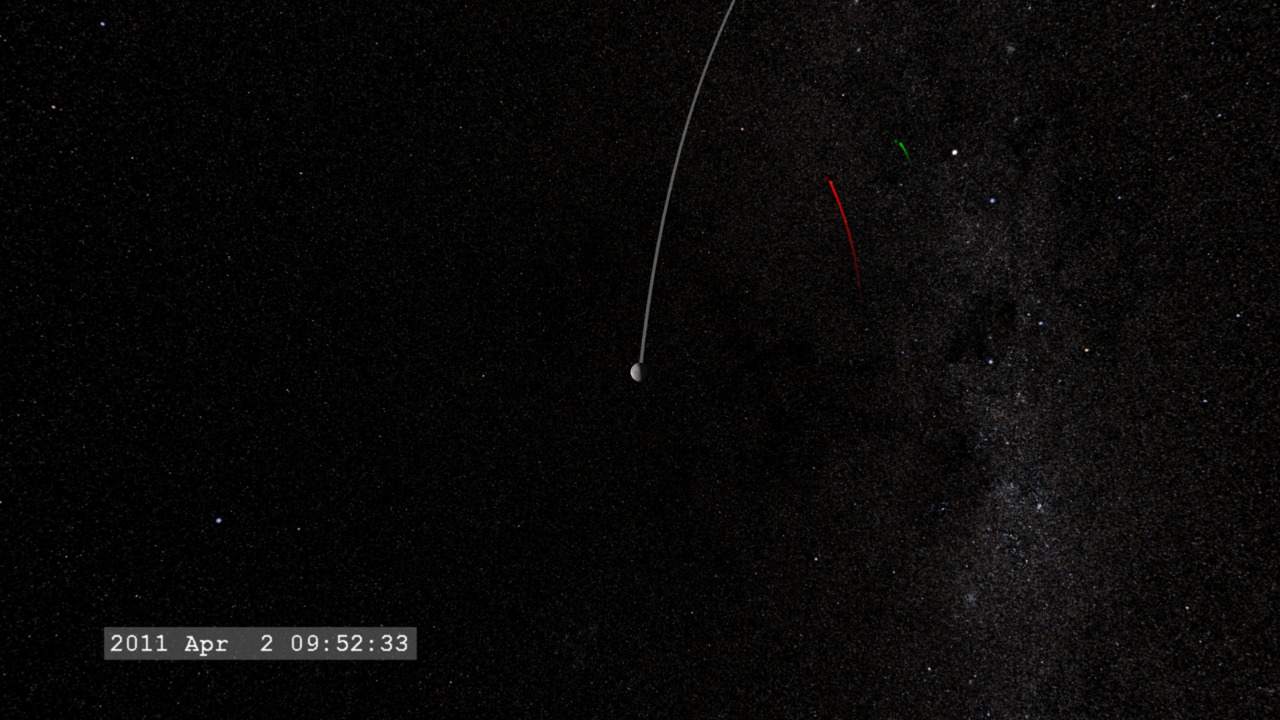Several NASA Spacecraft Track Energy Through Space
Taking advantage of an unprecedented alignment of eight satellites through the vast magnetic environment that surrounds Earth in space, including NASA's ARTEMIS and THEMIS, scientists now have comprehensive details of the energy's journey through a process that forms the aurora, called a substorm. Their results showed that small events unfolding over the course of a millisecond can result in energy flows that last up to half an hour and cover an area 10 times larger than Earth.
Trying to understand how gigantic explosions on the sun can create space weather effects involves tracking energy from the original event all the way to Earth. It's not unlike keeping tabs on a character in a play with many costume changes, because the energy changes form frequently along its journey: magnetic energy causes eruptions that lead to kinetic energy as particles hurtle away, or thermal energy as the particles heat up. Near Earth, the energy can change through all these various forms once again.
Most of the large and small features of substorms take place largely in the portion of Earth's magnetic environment called the magnetotail. Earth sits inside a large magnetic bubble called the magnetosphere. As Earth orbits around the sun, the solar wind from the sun streams past the bubble, stretching it outward into a teardrop. The magnetotail is the long point of the teardrop trailing out to more than 1 million miles on the night side of Earth. The moon orbits Earth much closer, some 240,000 miles away, crossing in and out of the magnetotail.
This short video features commentary by David Sibeck, project scientist for the THEMIS mission, discussing a visualization of reconnection fronts.
Simulation courtesy of J. Raeder/UNH.
Watch this video on the NASAexplorer YouTube channel.
Credits
Please give credit for this item to:
NASA's Goddard Space Flight Center
-
Animator
- Tom Bridgman (Global Science and Technology, Inc.)
-
Video editor
- Genna Duberstein (USRA)
-
Narrator
- David G. Sibeck (NASA/GSFC)
-
Producer
- Genna Duberstein (USRA)
-
Scientists
- Vassilis Angelopoulos (University of California at Berkeley)
- Joachim Raeder (University of New Hampshire)
Release date
This page was originally published on Thursday, September 26, 2013.
This page was last updated on Wednesday, May 3, 2023 at 1:51 PM EDT.
Missions
This page is related to the following missions:Tapes
The media on this page originally appeared on the following tapes:-
ARTEMIS Reconnection Fronts
(ID: 2013064)
Thursday, September 26, 2013 at 4:00AM
Produced by - Will Duquette (NASA)



